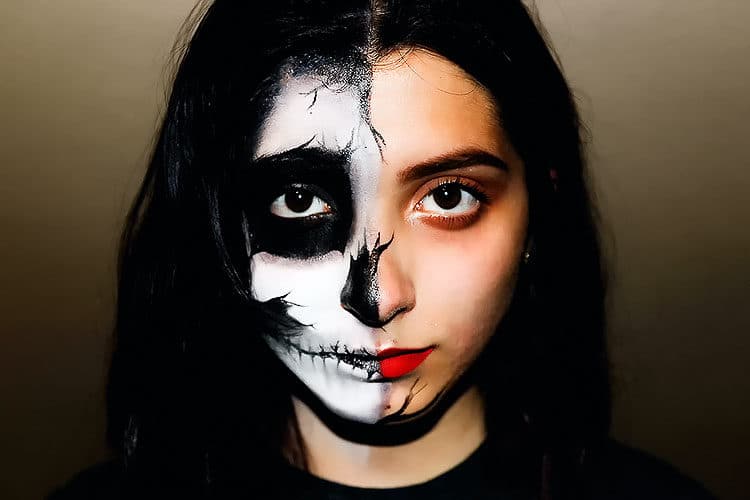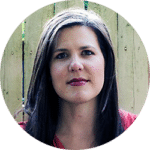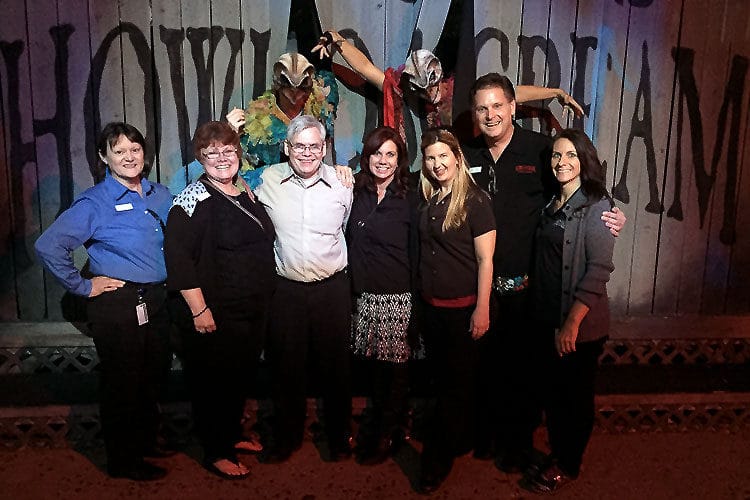A panel of haunt leaders discusses mentoring, organizational structure, conflict resolution, and designing for diversity
By Margee Kerr
On January 18th, 2020, five talented and experienced women in the haunted-attraction industry gathered on stage at HAuNTcon for the second annual Women in Haunting panel. The first year’s panel offered insight into wide-ranging challenges and opportunities for women working in the industry. This year, panel organizer Liz Irving, Senior Vice President of Marketing at Clarion Events, which produces HAuNTcon, opened the floor for panelists to offer actionable advice on several key issues. The questions centered on mentoring and leadership, organizational structure, navigating conflict, and designing for diversity. What follows are only some of the insights from the hour-long discussion.
Panelists:

Alexis Abare is co-owner of Haunted Farms of America (HFA), an organization that offers support and consulting to farms across the country that want to launch or expand Agritourism offerings on their properties. She is also the owner/president of Iron Raven Inc., the parent company of Haunted Farms of America in Beverly, MA, and Vampfangs and Dark Alchemy, both in Salem, MA.
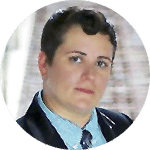
Amy Hollaman is the general manager for 13th Floor Haunted House in Denver, CO. She’s worked in the industry for over 15 years, previously as Creative Director of Terror Behind the Walls and as Assistant Director of Events and Operations at Eastern State Penitentiary. Hollaman is also is part of IAAPA’s Themed Entertainment Committee and has presented seminars at several conventions on topics ranging from attraction safety and security to interactivity.
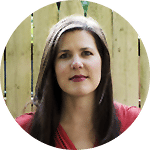
Margee Kerr is a sociologist and author of SCREAM: Chilling Adventures in the Science of Fear. Dr. Kerr teaches and conducts research at the University of Pittsburgh on why people engage with “fun-scary” experiences like haunted attractions. Kerr additionally consults for science centers, museums, and attractions.
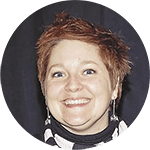
Alisa Kleckner is the owner of Scared of My Shadow, LLC, a boutique purveyor of hauntingly beautiful leather masks, headdresses, and accessories. Her professional expertise spans working as a theatrical designer creating work for over 200 regional productions; designing, sculpting and building for the haunt industry for nearly a decade; and producing a number of original theatrical pieces—all in tandem with being a college professor.
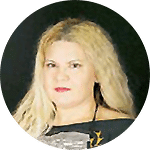
Jennifer Loman is co-owner of Reindeer Manor Haunted House in Red Oak, TX, which is in its 47th season. She is also co-owner of When Hinges Creak, a “hardware store for haunters.”
Full disclaimer: I was a panelist this year and last, and, while striving to offer an objective perspective, I’m sure my own biases have worked themselves into the following summary. But, as we discussed during the panel, acknowledging biases is the first step in accounting for them.
Key Takeaways
- On mentorship: “We need to be advocates for people who are early [in their] career. We, as advanced professionals, have an obligation to those newer people, those younger people, to give them support so they can gain confidence to speak for themselves.”
- On mentorship: “Take five minutes, and write the top 10 things a person new to haunting needs to know about opening a haunted house.”
- On organizational structure: Without the right organizational structure, qualified employees may be overlooked for advancement either intentionally or as the result of implicit bias. Well-defined job descriptions and a transparent organizational structure can also protect against pay inequality.
- Having the right organizational structure improves efficient use of resources and time, which increases productivity, streamlines communication, and encourages accountability.
- Conflict resolution starts with creating and training employees about the protocol for addressing concerns. A written protocol communicates to staff that when issues arise, there’s a way we can hear them.
- On diversity: The work doesn’t stop with commitments to recruit and hire a more diverse staff. Efforts also need to go toward designing characters and costumes that represent diversity.
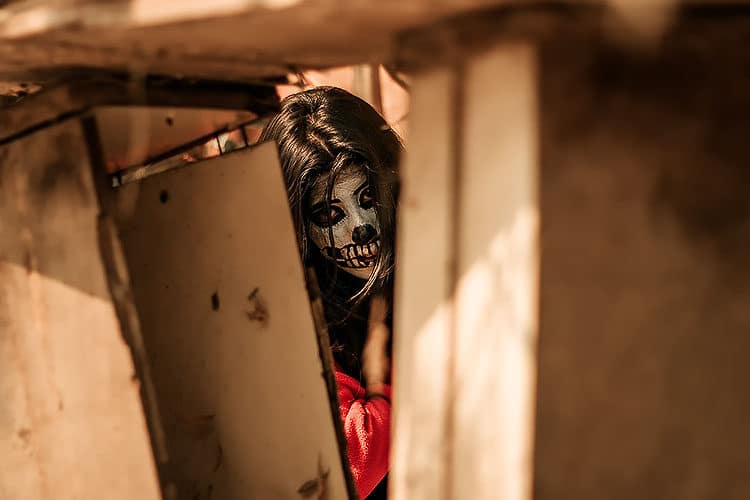
When You Can See It, You Can Be It
Liz Irving began the panel focusing on mentorship—how mentorship has affected our paths and what steps we’re taking to mentor others. Mentorship can have a tremendous impact on one’s career trajectory and is essential for advancing leadership. However, as many studies (and panelists’ experience) show, it’s difficult for women to find mentors in male-dominated industries. As Alexis Abare shared, “Being a woman in this industry, I’ve always felt like no one’s ever had my back. I heard stuff I shouldn’t have heard…and I kept my mouth shut through a whole chunk of it, because, if I’d opened my mouth, I would have felt even more isolated…I don’t recommend anybody do that.”
Alisa Kleckner counts herself lucky to have had an influential mentor. She credits her current success to a costume-design professor who recognized her talent in college and connected her to a job in the field. It opened a door, setting her on the path to where she is today. As she shared, “I was lucky enough to have an exceptional person behind me.” Now, it’s her turn to pay it forward. “We need to be advocates for people who are early [in their] career. We, as advanced professionals, have an obligation to those newer people, those younger people, to give them support so they can gain confidence to speak for themselves.”
We often keep creative ideas and techniques under lock and key, because being the first to have The Next Big Thing means more business. However, sharing information is vital to grow the industry. As Amy Hollaman stated, “I believe it’s important for us to share how we learn, innovate, evolve, and what we take away from mistakes.”
Besides improving safety, sharing what we know pushes creativity in design and technology. Jennifer Loman achieves this through an internship program where the next generation can practice with new tools and have space to grow. Mentorship requires effort. It means putting in the time to problem solve, brainstorm, and guide without dictating. But the payoff is mutual. As Loman observes, “You’ve got this person who started [as] this young little sapling and, all of a sudden, they’re this great oak. It’s a beautiful thing to watch.”
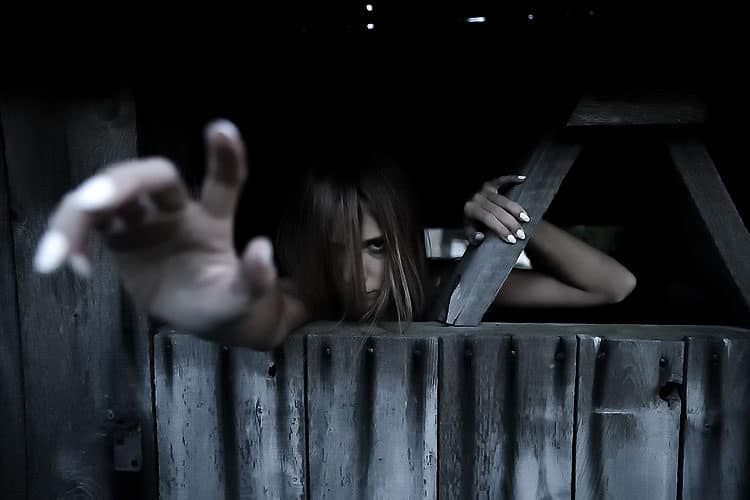
Mentorship takes time, and during Halloween season, there isn’t much time to spare. But making time for mentoring isn’t impossible. Hollaman shared that when a former employee reached out for advice on opening an attraction in less than a year—an overwhelming task—her response was, “How can I help her? How much time do I have? I told myself, ‘Take five minutes, and write the top 10 things she needs to know about opening a haunted house.’ I did that, it didn’t take long, I felt great, and I gave her a place to start.”
Another method for making mentoring both effective and manageable is through job shadowing. For example, Hollaman invites promising staff to join her when a relevant learning opportunity arises—such as difficult guest-relation scenarios or disciplinary discussions. “I tell them, ‘You will not talk, you’re just going to sit there.’ Then, afterwards, we talk through what happened.” This process offers skill training and modeling what it means to be a leader, which includes acknowledging mistakes and collaborating to find solutions.
The panelists agreed that being a mentor doesn’t mean having all the answers. Abare noted, “I spent my entire career looking for one person to mentor me, and it disappointed me every freaking time until I realized I didn’t need just one mentor. I could have a hundred mentors.” The key is having confidence in knowing what you can and can’t offer. Abare commented, “When I’m giving advice to other people, if I don’t know what I’m talking about, I’ll say, ‘I don’t [expletive] know what I’m talking about,’ and I’m fine with that. If I know somebody that I can move them onto, I’m fine with that too. I don’t need to be right all the time.”
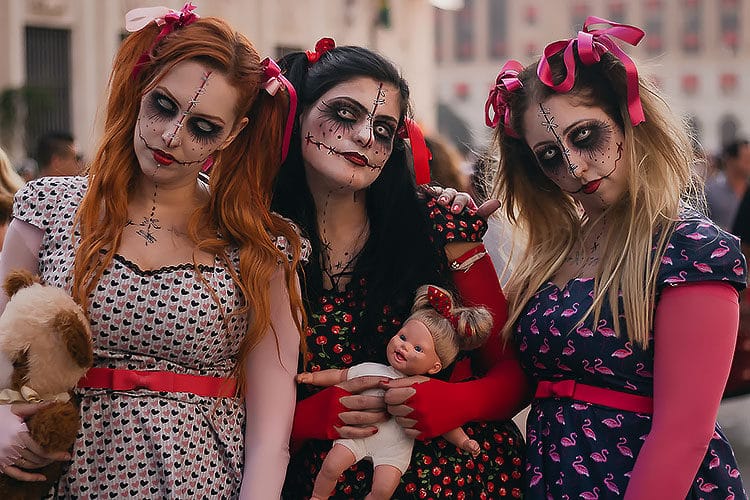
Let’s Talk Organizational Structure
The next round of questions centered on organizational structure. Often overlooked, the structure of an organization can significantly affect advancement, especially for women and marginalized groups. We can overlook qualified employees for advancement without the right structure either intentionally or as result of implicit bias (e.g.; “I like this person, because they’re just like me!”). Well-defined job descriptions and a transparent organizational structure can also protect against pay inequality. It’s much more difficult to justify why a person at the same level or in a similar role is getting paid 20% more than you are. Not that every organizational structure works as a buffer against discrimination, but the structure can offer a place to start, and panelists agreed it’s critical to have one.
Haunted attractions have a lot of moving parts: design, build, ticketing, marketing, staffing, guest relations, and so on. Taking the time to build an organizational structure allows everyone to focus only on what they need to do. As Abare noted, “We put a haunt together last season quickly, and the org chart was super important for making me realize I didn’t need to do everything, which made me feel so much better.”
Organizational structure is vital for small haunts as well. For example, Loman, who runs her haunt with her husband, shared “We had to figure out early on how to work together and not step on each others’ toes. Because we were diligent in figuring out who was responsible for what early on, our staff didn’t have to figure that out for themselves. They didn’t have to ask, ‘Do I go to Alex, or do I go to Jennifer?’”
Key in achieving these gains is including a breakdown of the structure during training and posting an organizational chart in common areas. These efforts directly impact staff retention and morale. Loman continued, “If you’re one of our staffers and you don’t know where to go to with a problem… you’re just going to gripe to your peers…or you’ll feel you’re not heard and just quit.”
Complex hierarchical structures can intimidate, and some may perceive that those ‘at the top’ get to sit back and relax while everyone else does the hard work. This is rarely the case, as Hollaman shared. “What’s important to show your staff is that…when we’re operating the haunted house, the pyramid tilts, and here I am leading this army of customer service, operations, and acting. I’m out there greeting guests, selling tickets, asking if a staff member needs a break, and scaring people. So, it’s not about me up at the top sitting at my desk with my feet up,” she said.
There are countless different organizational structures. Deciding which one to go with depends on the needs and goals of the group. Kleckner is a fan of collaborative structures in which everyone has equal opportunity and responsibility to contribute, but it’s clear the decision is ultimately hers. “I think of it in terms of, ‘the buck stops with me. I have an expectation, and I’ll tell you if that expectation isn’t met, but you’re great at this, so own it.’” This approach encourages a sense of ownership that drives motivation, creativity, and, ultimately, a sense of pride.

Navigating Conflict like a Boss
Conflict is a challenge in any workplace. There’s identifying and resolving the instigating issue, but there’s also navigating the aftermath. Resolving conflict begins with creating a written protocol (which should include all relevant state and federal laws) and then training all staff on that protocol. A written protocol communicates to staff that when issues arise, there’s a way they can be heard. This alone can prevent minor frustrations from turning into volcanos.
But, volcanos still erupt. To diffuse tension, Abare tries to find the humor in a situation, and she always comes prepared with a solution. Loman works to prevent lasting negative consequences by using the ‘sandwich’ approach: “This is actually a tool I use a lot, and it really helps. I make a positive statement followed by the corrective action in the middle, and end with a positive cookie.” Ideally, employees leave motivated to correct the issue and move on with a positive attitude.
Refocusing attention to the big picture can also be effective. Sharing what this looks like in action, Hollaman offered a familiar example involving the challenge of firing a popular employee without tanking staff morale. Hollaman explained what she did after such a termination. “I knew the person’s three best friends would quickly reach out to me and ask, ‘What happened?’” Hollaman shifted their attention upstream and used privacy laws to her advantage. She told them, “I can’t share that employee’s information with you, because it wouldn’t be respectful to them, but I can tell you I made the decision for the greater good.” After the termination, she moves on to the actual task at hand by asking relevant questions such as, “Do we have enough makeup artists tonight to make this a good show? Okay, cool.” This approach communicates that the decision is final, that their friend’s private information is being protected, and that there’s a bigger picture to think about. It also serves as a reminder that, while working in a haunted attraction is just about the most fun you can have at work, it’s still a professional workplace.
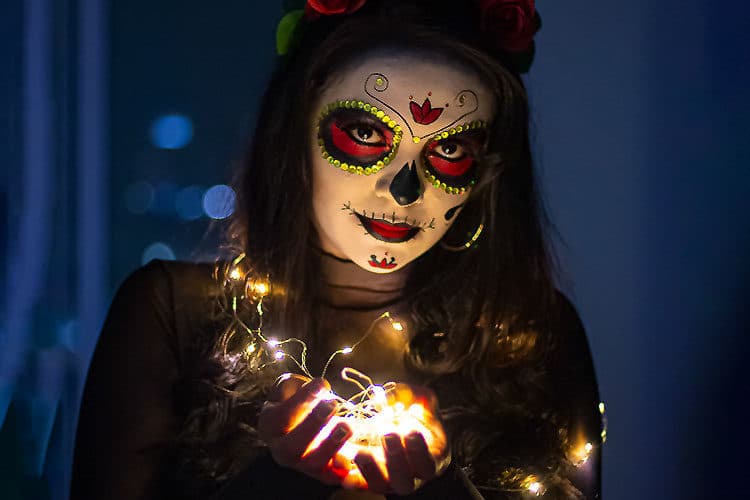
Designing for the Reality of Our Diverse World
The final topic for consideration was designing for diversity. Representation is important, and challenging discriminatory practices in hiring is an active and ongoing process. Not acknowledging the reality of the diversity in our world—be it age, race, gender, body type, etc.—results in marginalized groups facing continued discrimination. However, the work doesn’t stop with commitments to recruit and hire a more diverse staff. Effort must go into creating costumes and environments that are as diverse as the bodies that will fill them.
For example, several panelists echoed the need for designing characters and costumes in all sizes. Too often, those with larger body types have few options for costumes. This carries negative consequences for the individual and reduces staff morale and retention. As Hollaman shared, “These new staff members arrive to work motivated and excited to scare, and all we have for them to wear is a big black jumpsuit, while everyone else has these cool costumes. How deflating is that?”
As a mask designer, Kleckner thinks about this a lot. Not every person can wear every design, and part of her design process is accounting for that. For example, some masks are difficult to wear with glasses. This doesn’t mean there’s no place for that style of mask; it means creating other costumes that not only allow for glasses but for which wearing glasses could be an asset. Kleckner shared, “I think it’s about being mindful, listening, and just trying it.” This isn’t only the fair thing to do, it also makes for more creative, inspired, and all-around better haunted attractions for guests and staff.
With time running over, Liz Irving offered panelists an opportunity to share fun, team-building haunt traditions. From stories of interpretive dance and a cut-throat tournament of rock-paper-scissors, our time together ended in good spirits and high hopes for the future.
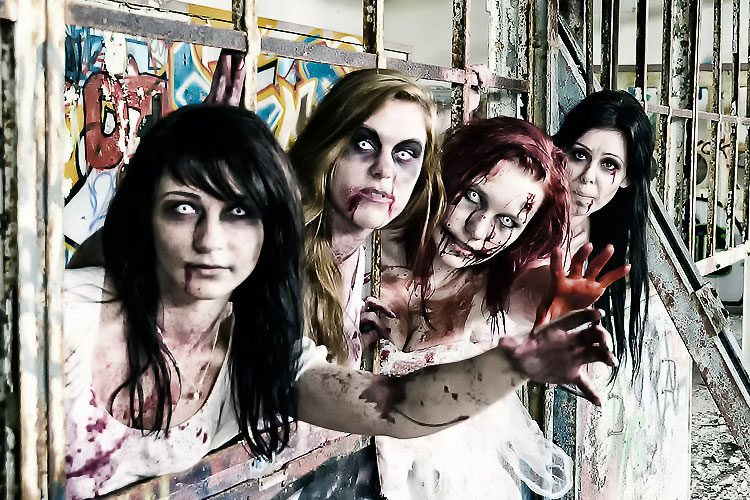
What to do right now:
- Find a mentor, be a mentor: Don’t hesitate to ask others in the industry for guidance or to share your own wisdom!
- Make a chart, seek a chart: If you’re the boss, make sure you’ve got a well thought out organizational structure. For everyone else, ask to see if your organization has one, to enhance your own clarity.
- Have a problem, have a solution: Develop, train, and/or learn your business protocol for conflict management.
- See diversity, design diversity: Human bodies are diverse, so make sure you’re designing with that reality in mind.
Dr. Margee Kerr
Dr. Margee Kerr is a sociologist and author. She teaches and conducts research on fear—specifically, how and why people engage with “scary” material. Dr. Kerr is the co-investigator in a first-of-its-kind study that measures how the brain and body respond to “fun-scary” experiences like haunted attractions, paranormal investigations, and thrill rides.
